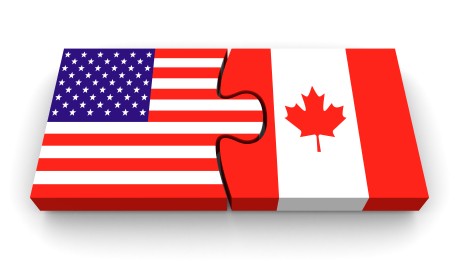Exchanging CAD to USD the smart way
Finance ·So you want to exchange some Canadian dollars to American but get burnt with the forex rate your bank charges you.

Norbert’s Gambit is a cheap technique to convert Canadian dollars to US dollars and vice versa. You can use this technique to buy US listed stocks or get some US dollars for an upcoming vacation. If you plan to move to the US, Norbert’s Gambit can help you convert your Canadian savings without exchange fees.
It’s named after Norbert Schlenker, an investment advisor in B.C. who first came up with it.
…
I love analogies.
Imagine you’re going to a buddy’s wedding in New York. You visit a Calvin Klein store in Toronto and pick up a sweater for 200 CAD. You drive to New York only to realize that the bride got cold feet and your buddy got stood up on his wedding day. Too bad for your friend but now you have an ungifted sweater (that doesn’t fit you either). You decide to return it to the Calvin Klein store in New York.
The sweater retails there for 160 USD (equal to 200 CAD as of October 2017). They allow you to return the sweater and you get back 160 USD.
Essentially, you converted your 200 CAD to 160 USD without charge.
So, how do you convert 10,000 CAD to USD? Use Norbert’s Gambit.
First, you buy a financial instrument like an ETF (Exchange Traded Fund) from the Canadian market. Then you can exchange the fund to its equivalent on the US market. Finally, sell it to get USDs. Note, not every ETF or stock is available on both markets.
…
The nitty gritty details (All prices are as of October 2017):
- First, you need a discount brokerage account with your bank. Let’s call this your investment account.
- Within this account, you can open accounts in USD and CAD to hold your RRSP, TFSA or regular non-registered account.
- You can use your CAD account to trade Canadian stocks (like Blackberry and Shopify) and your USD account to trade American stocks (like Walmart and Amazon).
- To keep it simple, let’s say you have opened a CAD and USD non-registered account.
- Using CAD, you buy the DLR ETF on the Toronto Stock Exchange in your CAD account (current price per unit is 12.40 CAD).
- Say you bought 1000 units of this ETF. This means you paid 12400 CAD for the ETF. Discount brokers charge 10 CAD as commission whenever you buy a stock or an ETF. So that’s a total of 12410 CAD.
- Call your discount broker right away to do a ‘journalling’ over into your USD account. This just means they move your ETF units into the US account. This process doesn’t cost you a dime. New features on brokerages (like TD Direct Investing) allow you to do this online.
- This is possible because the same ETF is listed on the New York Stock Exchange as DLR.U. The price per unit is 9.94 USD.
- Wait 2 days for the trade to settle. You should now see 1000 units of the DLR.U ETF in your US account. You’re now good to sell all these units. When you’re selling, ensure that you enter DLR.U as the trade symbol. Don’t fret that ETF shows as DLR even after journalling. The most important thing is when making the sale, you enter DLR.U.
- Proceeds from the sale will now show up as cash in your USD account. Voila! You just got 9930 USD in your account. 9940 from the sale (1000 units at 9.94 USD) minus the 10 dollars for commission.
So effectively, you spent 12410 CAD and got 9930 USD for it.
If I were to convert 12410 CAD using my bank’s foreign exchange service, I would get 9673 USD. So, you basically saved 268 USD. Now, go buy your heart-broken friend a ticket to Toronto and introduce him to our fine ladies here.
Norbert’s Gambit has one drawback though. You need to perform the process 2–3 days beforehand. USD/CAD exchange rates could also fluctuate during that 2 day window when you’re converting ETFs. But, that’s a small risk.
This method can be used with:
- RRSP (move shares from CAD RRSP to USD RRSP)
- TFSA (move shares from CAD TFSA to USD TFSA)
- Non-registered account
There you have it. Now, don’t you ever let those big banks eat into your hard earned dough!
…
Further reading:
PWL has a bunch of great white papers about the process for each of the major banks:
Liked this post? Share them lest others should find this useful.
